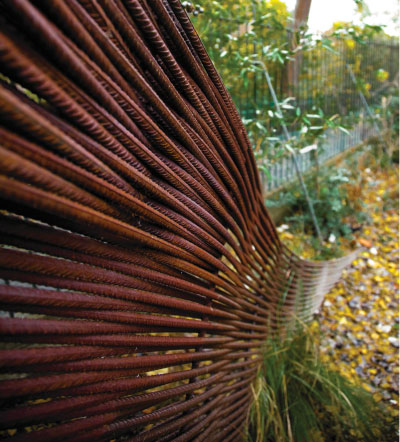
Photography by Dan Farrar. Additional photography by Groves-Raines Architects. (Click images to enlarge)
Because the rods that make up the shed are inserted directly into the ground, the garden remains unaffected by any invasive building foundations. To create the dual-purpose composting shed and garden store, the architects relied on “a technique similar to traditional willow weaving” to make the steely walls more conducive to its earthy setting. Bent into smooth curves, the rods lose much of the harsh quality often associated with industrial building materials and begin to blend seamlessly with the adjacent wooded area. The woven rods allow air and light to stream into the shed, a benefit both practical and aesthetic. Lastly, the roof is made with weather-resistant EPDM lined steel and planted with grass, reinforcing “the connection with the wooded context” that the architects rightfully claim. By re-purposing the typical building blocks of urban architecture to create an “organic form” structure, Groves-Raines Architects successfully reimagines our uses for man-made materials.




 Facebook
Facebook Permalink
Permalink Digg
Digg Reddit
Reddit LinkedIn
LinkedIn StumbleUpon
StumbleUpon Tumblr
Tumblr

